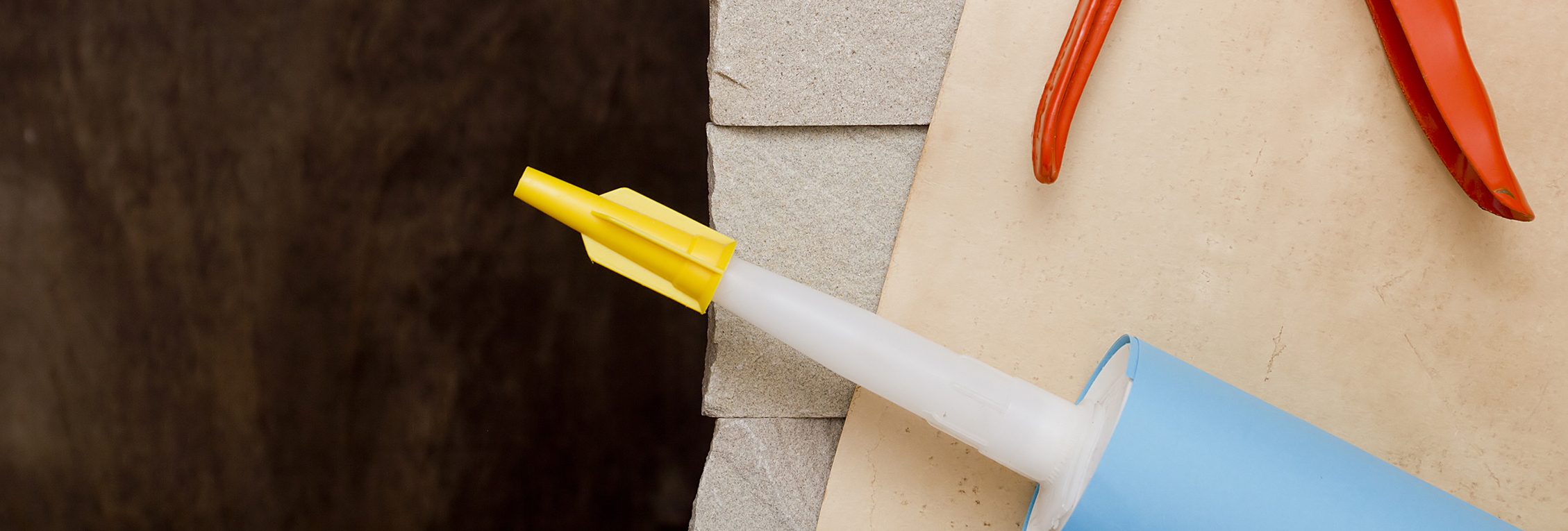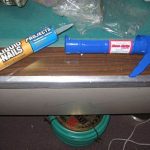One of the main disadvantages of using liquid nails is that they are not as strong as other adhesives like epoxies and can be prone to failure under certain conditions, such as extreme temperatures and moisture.
Additionally, some types of liquid nails may require additional preparation before application, such as primers or sealants, which can add time and cost to a project.
Finally, since they are an adhesive, they can be difficult to remove in the event you need to make repairs or adjustments to your project.
Can Liquid Nails be Painted?
Contents
The short answer is yes; liquid nails can be painted over if desired.
However, it is important to note that the type of paint used should be specifically designed for use on adhesives like liquid nails and should always be tested on a small area prior to full application.
Additionally, some types of liquid nails may require additional preparation before painting, such as primers or sealants.
How to Paint Liquid Nails
Painting over liquid nails requires a few simple steps in order to ensure a successful outcome.
First, you will need to clean the surface of any dust or debris with a damp cloth and allow it to dry completely before beginning the painting process.
Next, apply a primer specifically designed for use on adhesives like liquid nails and allow it to dry completely according to the manufacturer’s instructions.
Once the primer has dried, then begin applying your desired paint color with either a brush or roller, depending on your preference, and allow it to dry completely before applying any additional coats needed for complete coverage.
Tips for Painting Liquid Nails
When painting over liquid nails, there are a few tips that can help ensure a successful outcome:
- Always test your paint color on a small area prior to full application in order to make sure you’re happy with the results.
- Make sure the surface is clean and free from dust or debris prior to beginning the painting process in order to ensure proper adhesion between the paint and adhesive.
- Allow each coat of primer and paint ample time between applications in order for them both to dry properly before adding additional coats as needed for complete coverage.
- Be sure not to apply too much pressure when painting over liquid nails in order for them not to crack or chip away from the surface due to too much force being applied during application.
Different Types of Paint For Painting Liquid Nails
When it comes time to choose what type of paint you would like to use when painting over liquid nails there are several options available depending on your specific needs, including latex-based paints, oil-based paints, acrylic-based paints, enamel-based paints, and more.
Each type has its own advantages, so it’s best practice to do some research ahead of time so you know exactly what type would best fit your project needs.
Frequently Asked Questions
Is Liquid Nails Stainable?
Liquid Nails is an adhesive that is often used to glue down plywood or hide gaps between floorboards or tiles.
However, it’s notorious for staining everything it comes in contact with. Even just touching the glue can leave a mark.
So are liquid nails stainable? Unfortunately, the answer is no.
Liquid Nails is solvent-based, which means that it will dissolve most stains. However, the stain will reappear over time, often after a few months.
So if you’re planning to use liquid nails, it’s best to lay down a tarp or cover the floor with newspapers before you begin.
Is Liquid Nails Waterproof?
Liquid Nails is a glue that’s used for a variety of things, including fixing chairs, tables, and other objects.
It’s waterproof, so it can be used for outdoor projects. However, it’s not suitable for underwater applications.
Liquid nails are toxic and corrosive, so they should be handled carefully. While Liquid Nails is waterproof and non-toxic, it’s not suitable for underwater applications.
Is Liquid Nails Sandable?
Liquid Nails Sandable is a primer and sealer for colored concrete surfaces that is meant to help you sand your floor.
It prevents your floor from chipping when you sand it. Liquid Nails Sandable is different from other sealants because it is sandable after drying.
Liquid Nails Sandable also fills cracks in concrete surfaces and provides a non-skid surface. Liquid Nails Sandable costs $11.99 at Home Depot.
What Is Liquid Nails Made Of?
Liquid nails are a liquid adhesive that was invented by Alfred Yao in 1954. Since then, it has become a popular adhesive for a range of applications, such as construction, automotive repairs, and woodworking.
Liquid nail polish is easy to apply and dries quickly. It bonds well with all kinds of materials, including wood, metal, fiberglass, and concrete.
Liquid nails are also safe to use because they contain no volatile organic compounds (VOCs). However, it does have strong fumes that can be harmful to the respiratory system.
What Is Liquid Nails Used For?
Liquid Nails are a fast-acting adhesive that bonds with almost any surface.
The liquid dries in seconds and can be used on metal, concrete, wood, plastic, and more. It’s perfect for repairing almost anything, from furniture to fences to tools.
Liquid Nails are also great for custom projects around the house, such as hanging shelves or repairing a sink. It’s available at most hardware stores and can be used by almost anyone, making it a great glue for DIYers.
Liquid Nails even comes in multiple sizes to suit different needs. For example, you can use it for repairing a leaky faucet or for gluing together two pieces of wood.
Best of all, Liquid Nails is non-toxic and environmentally friendly.
Is Liquid Nails Heat Resistant?
Liquid Nails is a construction adhesive that is mainly used for attaching pipes and other plumbing fixtures together.
However, Liquid Nails can also be used to attach decorative molding in your home. Liquid Nails has a melting point of 190 degrees Fahrenheit.
This means that it’s best to use Liquid Nails on materials that have a temperature of 190 degrees Fahrenheit or lower. For example, Liquid Nails can be used on wood, concrete, metal, and plastic.
However, Liquid Nails should never be used on rubber or plastic molding that is exposed to heat. Furthermore, Liquid Nails should not be applied to surfaces that are extremely hot.
In other words, Liquid Nails should not be used on surfaces that exceed 190 degrees Fahrenheit. Additionally, Liquid Nails should not be applied to surfaces that exceed 80 degrees Fahrenheit or below 40 degrees Fahrenheit.
Is Liquid Nails Toxic?
Liquid Nails is a glue that is used to glue things together.
It’s useful for many different projects around the house. However, liquid nails are toxic, and using them can be dangerous.
Liquid nails contain chemicals that make them poisonous or dangerous if swallowed. Furthermore, liquid nails can cause skin reactions in some people.
Liquid nails can also cause respiratory issues if they get into people’s lungs. For these reasons, liquid nails shouldn’t be used indoors or in homes with pets or children.
Instead, people should try to use glue that has no harmful chemicals or that is made with non-toxic ingredients.
Conclusion
In conclusion, painting over liquid nails is possible if done correctly with patience and care, following all necessary steps outlined above.
It’s important, however, that you choose carefully when selecting what type of paint you would like to use since different types have their own advantages depending on what type of material they will be applied, too.
Additionally always remember safety first when working with any type of adhesive so always wear protective gear such as gloves when handling these materials.






